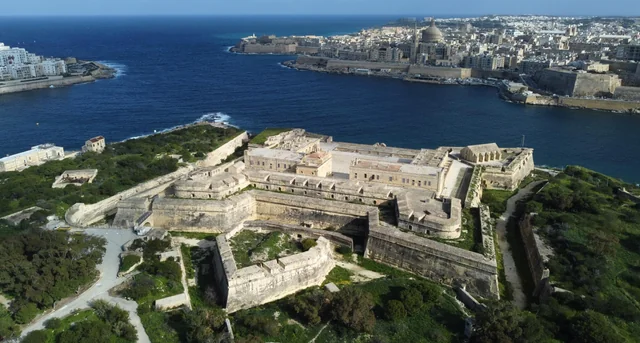Table of Contents
ToggleExploring the Valletta Fortifications
Malta’s Timeless Walls of Defense
Perched on a rocky peninsula that juts dramatically into the Mediterranean, Valletta, Malta’s capital city, is a living testament to the art of fortifications. Its mighty bastions, curtain walls, cavaliers, and watchtowers not only shaped the city’s skyline but also defined the course of Maltese history. Known collectively as the Valletta Fortifications, these defensive structures are among the most remarkable in Europe, showcasing the genius of Renaissance military engineering and the resilience of the Maltese people.

The Origins of Valletta’s Fortified Walls
The story of Valletta’s fortifications begins in the 16th century. Following the devastating Great Siege of 1565, in which the Ottoman Empire laid siege to Malta, the Knights of St. John recognized the need for an impregnable city. Valletta, strategically located on the Sciberras Peninsula overlooking two natural harbors—Grand Harbour and Marsamxett—was chosen as the site.
In 1566, the foundation stone of Valletta was laid by Grand Master Jean Parisot de Valette, after whom the city is named. The Italian military engineer Francesco Laparelli, a pupil of Michelangelo, was tasked with designing the city. His vision was revolutionary: Valletta would be the first planned city in Europe, built with straight streets in a grid system, and surrounded by formidable bastions and ramparts.
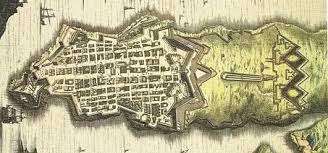
Engineering Marvels of Defense
The fortifications were designed to withstand the era’s most powerful weapons: cannons and gunpowder artillery. Towering bastions such as St. John’s, St. Michael’s, and St. Andrew’s projected outward, creating overlapping fields of fire that eliminated blind spots. Deep ditches (known locally as “fosses”) were cut into the rock to form barriers against invaders. Behind the bastions, high walls, cavaliers, and counterguards created multiple layers of defense.
The walls themselves were built from Malta’s honey-colored limestone, blending seamlessly into the rugged landscape. Over the centuries, the fortifications were extended and reinforced, particularly during the 17th and 18th centuries, as new military technologies emerged.
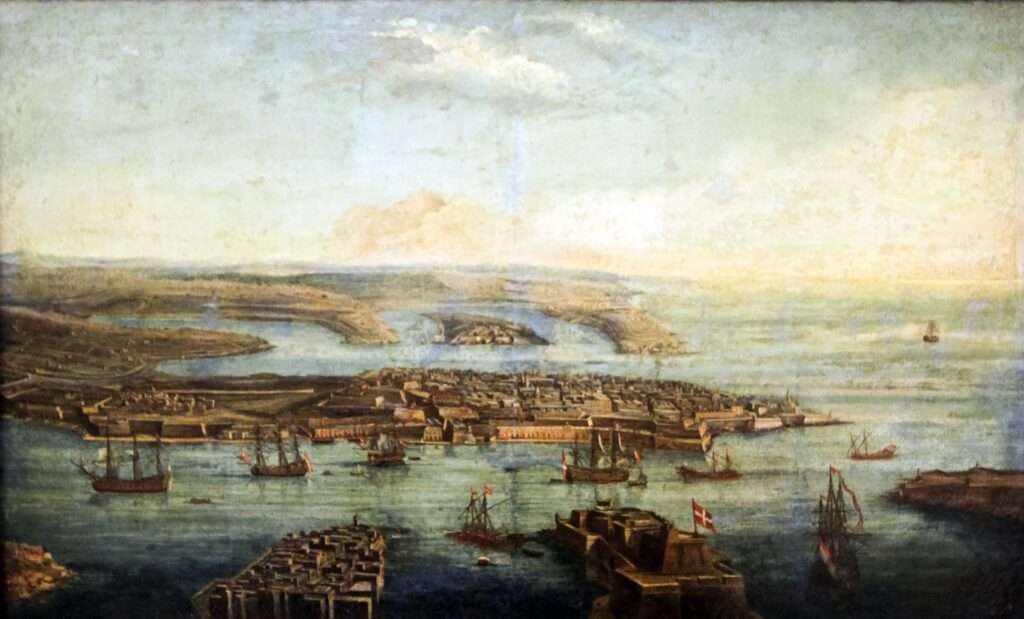
Valletta and Its Strategic Role
Valletta’s defenses were not merely symbolic—they played a vital role in European history. The city served as a bulwark against Ottoman expansion into the western Mediterranean. Later, under British rule in the 19th and 20th centuries, the fortifications were modernized and remained militarily significant, particularly during World War II, when Malta endured relentless Axis bombing.
The city’s fortified design made it resilient, enabling Malta to withstand both sieges and bombardments. Valletta became not only a fortress city but also a hub of naval power and commerce, shaping its destiny as a cultural and strategic crossroads of the Mediterranean.
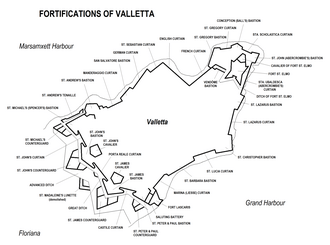
Walking the Walls Today
Today, Valletta’s fortifications remain remarkably intact and accessible. Walking along the bastions is like stepping back through centuries of military history. The Upper and Lower Barrakka Gardens offer sweeping views across Grand Harbour and the Three Cities—Birgu, Senglea, and Cospicua—each of which has its own impressive defensive works.
Fort St. Elmo, standing at the tip of the peninsula, is one of the city’s most iconic strongholds. It played a central role during the Great Siege of 1565 and now houses the National War Museum, where visitors can explore artifacts ranging from the Knights’ armor to relics from World War II.
Another highlight is the Valletta Ditch, once an imposing barrier, now transformed into a lush public park where the scale of the walls can be fully appreciated. As you walk through Valletta’s gates—such as the modern City Gate, redesigned by Renzo Piano—you can still sense the weight of history embedded in the limestone ramparts.
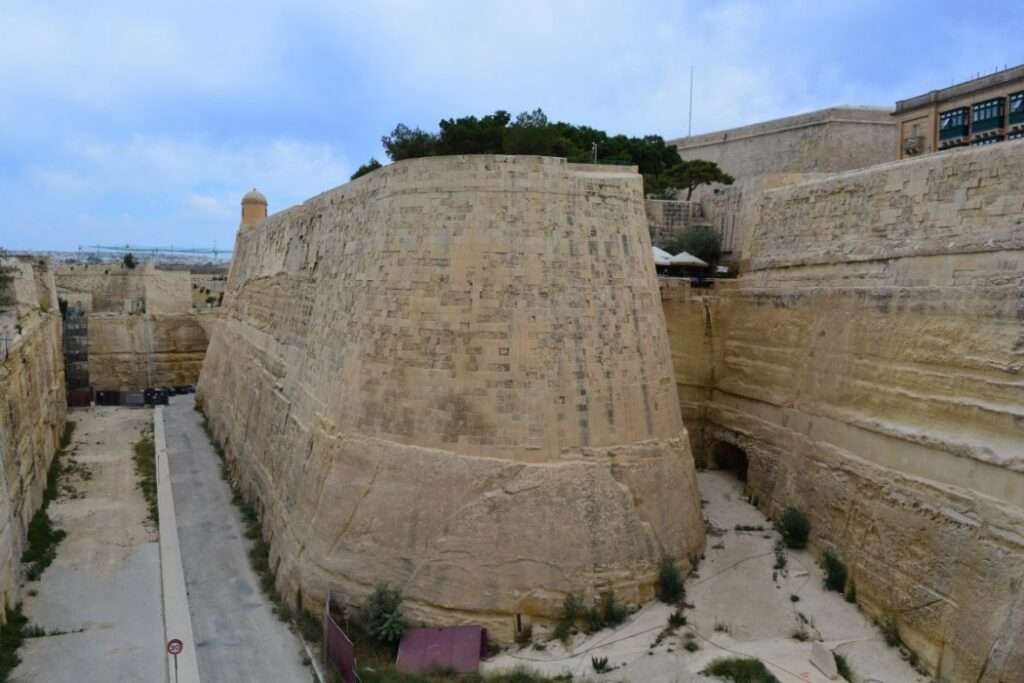
The Fortifications Interpretation Centre
To truly understand the complexity of Valletta’s defenses, the Fortifications Interpretation Centre is a must-visit. Opened in a restored 16th-century warehouse near the city’s entrance, the centre uses interactive displays, models, and maps to explain the evolution of military architecture. It offers valuable insights into the techniques and strategies that made Valletta one of the most fortified cities in the world.
A Living UNESCO World Heritage Site
In 1980, Valletta was inscribed as a UNESCO World Heritage Site, with its fortifications recognized as a masterpiece of military engineering. But these walls are more than stone—they are living heritage. They form part of the city’s daily rhythm, enclosing a vibrant capital filled with theaters, palaces, cathedrals, and bustling piazzas.
Nighttime brings another dimension to the fortifications. As floodlights bathe the bastions in golden light, the walls appear both majestic and serene, reminding visitors of their enduring presence.
Preserving the Past for the Future
In recent decades, extensive restoration projects have been undertaken to preserve Valletta’s fortifications. Weather, pollution, and centuries of wear have taken their toll, but conservation efforts ensure that these monuments remain standing for future generations. The work is not only about safeguarding stone but also about keeping alive the spirit of resilience and ingenuity that they represent.
Why Valletta’s Fortifications Matter
For travelers, the Valletta Fortifications are not simply an attraction; they are an immersion into the essence of Malta. They tell stories of knights and battles, of ingenuity and survival, of Malta’s role at the crossroads of civilizations. Walking their ramparts, you don’t just admire views of the harbors—you connect with centuries of history etched into every block of limestone.
Valletta’s walls are more than barriers of defense; they are monuments of endurance. They remind us that cities can be both strongholds and sanctuaries, places where culture thrives behind walls built for war.
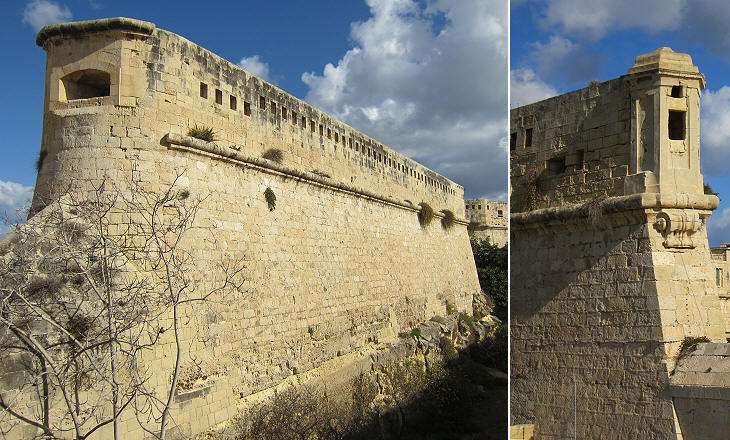
Valletta’s recognition as the European Capital of Culture was a milestone that celebrated the city’s past while shaping its future. It showcased how even a small capital can make a profound impact on Europe’s cultural stage. For travelers, Valletta offers more than scenic beauty—it offers an immersive journey through history, art, and community spirit.
As the sun sets over the Grand Harbour and the city’s limestone glows with a warm golden hue, Valletta stands as a testament to the enduring power of culture to unite, inspire, and transform.

